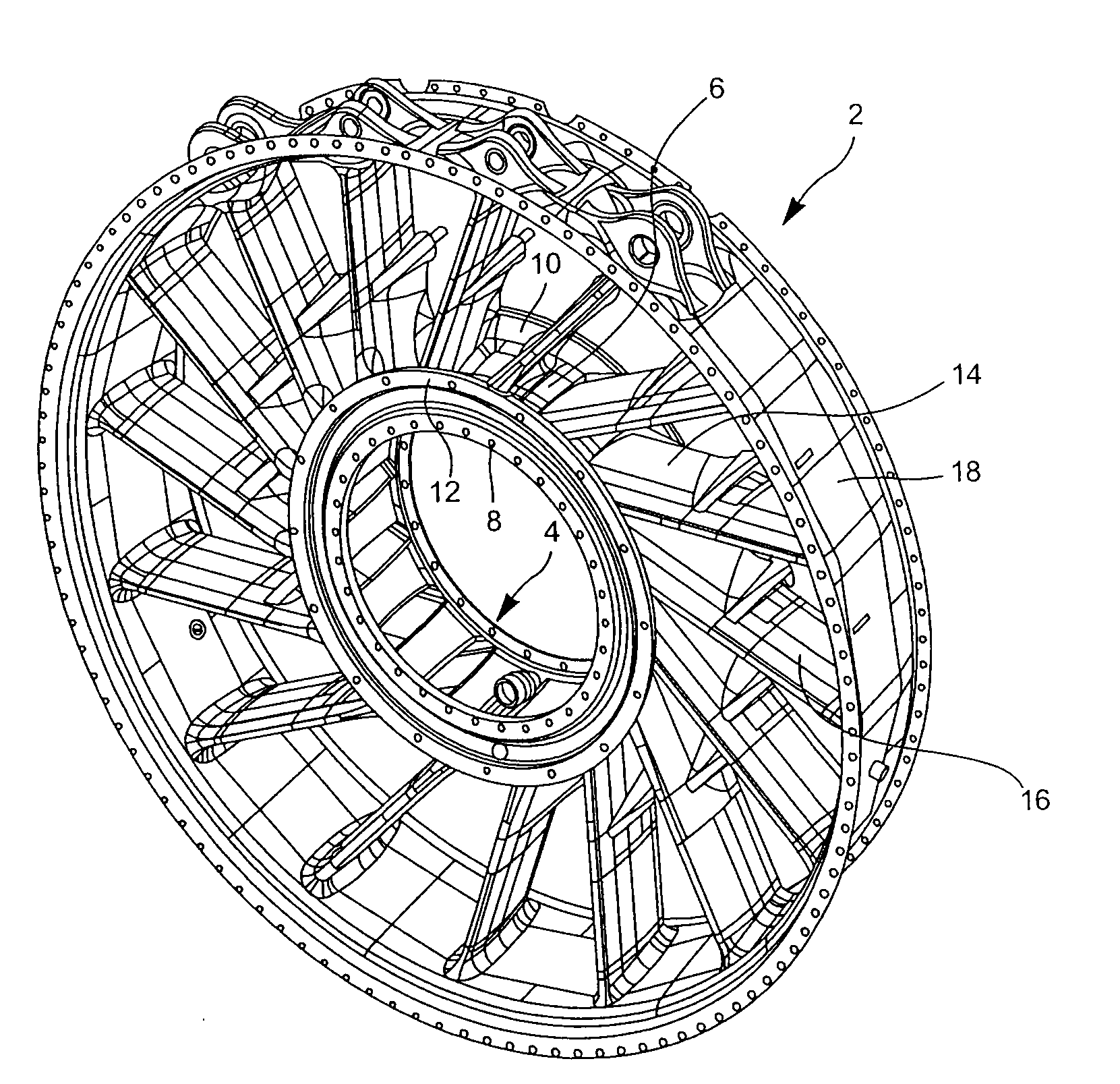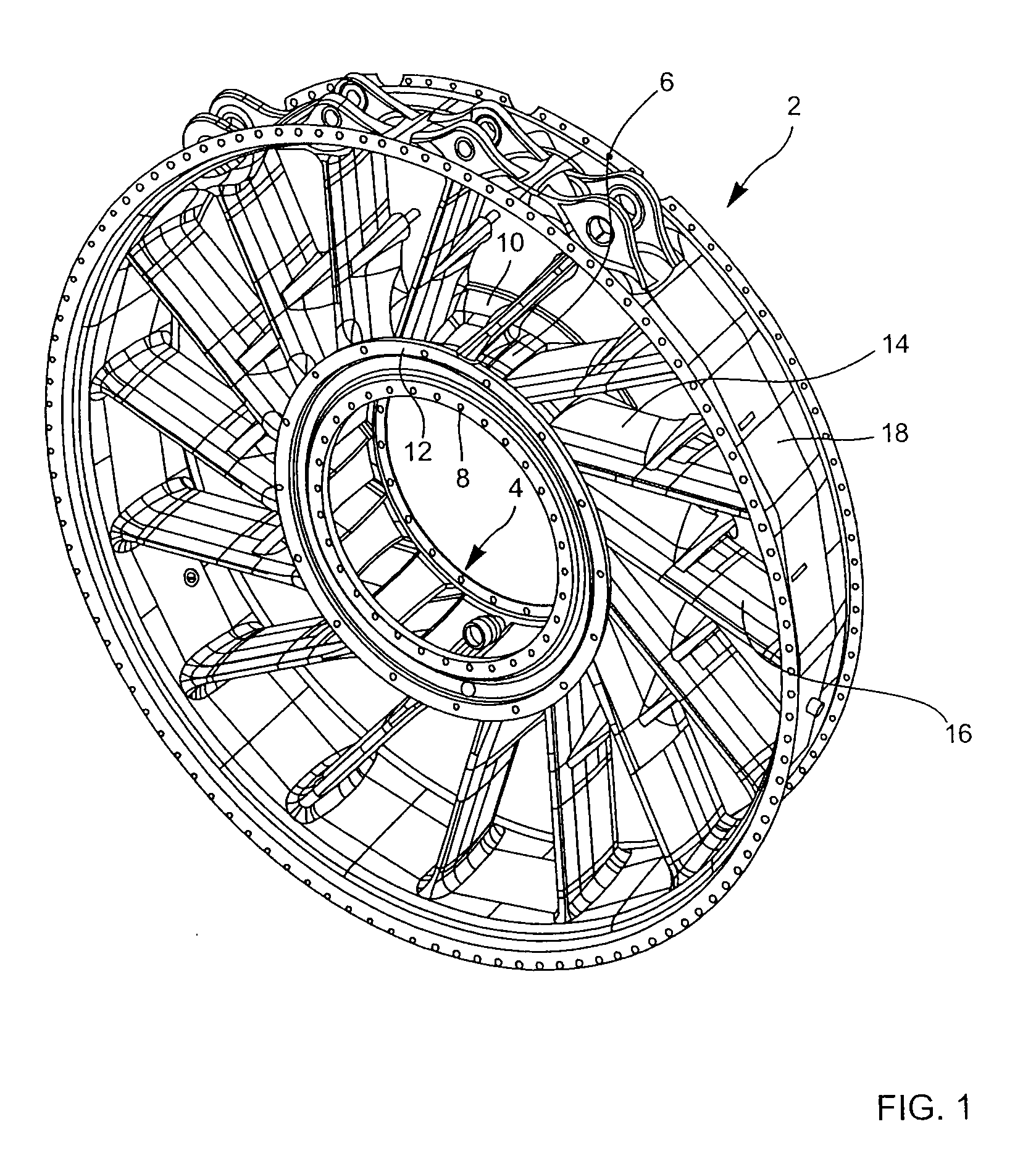Exhaust casing hub comprising stress-distributing ribs
- Summary
- Abstract
- Description
- Claims
- Application Information
AI Technical Summary
Benefits of technology
Problems solved by technology
Method used
Image
Examples
Embodiment Construction
[0016]In FIG. 1, the general reference 2 designates an exhaust casing in accordance with the present invention. This exhaust casing comprises a hub designated by the reference 4. The hub 4 comprises a hub center 6 and, on either side of this hub center 6, an upstream flange 8 and a downstream flange 10 which are terminated by a rim 12. Cuffs 14 are formed on the hub center 6. In the exemplary embodiment represented, the number of these cuffs is sixteen. The hub 4 is a casting. An arm 16 is welded to the end of each of the cuffs 14. There are thus sixteen arms in the exemplary embodiment represented. The circular parts 18, equal in number to the number of arms, are welded to the ends of the arms 16 so as to form a circular shroud which completes the exhaust casing.
[0017]FIGS. 2 and 3 show a top view and a side view, respectively, of a rib 20 formed in the hub of the exhaust casing represented in FIG. 1. The rib 20 extends from the upstream flange 8 to the downstream flange 10. It is ...
PUM
 Login to View More
Login to View More Abstract
Description
Claims
Application Information
 Login to View More
Login to View More - R&D
- Intellectual Property
- Life Sciences
- Materials
- Tech Scout
- Unparalleled Data Quality
- Higher Quality Content
- 60% Fewer Hallucinations
Browse by: Latest US Patents, China's latest patents, Technical Efficacy Thesaurus, Application Domain, Technology Topic, Popular Technical Reports.
© 2025 PatSnap. All rights reserved.Legal|Privacy policy|Modern Slavery Act Transparency Statement|Sitemap|About US| Contact US: help@patsnap.com



